 "ttyymmnn" (ttyymmnn)
"ttyymmnn" (ttyymmnn)
10/04/2016 at 12:35 • Filed to: planelopnik, planelopnik history
 9
9
 19
19
 "ttyymmnn" (ttyymmnn)
"ttyymmnn" (ttyymmnn)
10/04/2016 at 12:35 • Filed to: planelopnik, planelopnik history |  9 9
|  19 19 |
Welcome to
This Date in Aviation History
, getting of you caught up on milestones, important historical events and people in aviation from October 1 through October 4.
!!! UNKNOWN CONTENT TYPE !!!

October 1, 1990 – The death of Curtis LeMay. During the Second World War, strategic bombing became one of the most powerful elements of modern warfare, and one man would take the lead in shaping the bombing program for the US, molding it into one of the most powerful—and perhaps controversial—forces in the world. Born in Columbus, Ohio in 1906, Curtis LeMay earned a bachelor’s degree in civil engineering from Ohio State University before receiving a commission in the US Army Air Corps (USAAC) in 1930, where he flew pursuit fighters, specialized in navigation, and flew as a navigator aboard the !!!error: Indecipherable SUB-paragraph formatting!!! . When WWII started, LeMay’s reputation for discipline and perfection saw him rise quickly through the ranks of the USAAC. He began as the commander of a squadron of B-17s based in England, where he helped to develop the !!!error: Indecipherable SUB-paragraph formatting!!! formation that would become standard practice for American bombing missions. Later, as the commander of a squadron of !!!error: Indecipherable SUB-paragraph formatting!!! , he personally led many dangerous missions, and threatened crews with court-martial if they failed to reach the target. His insistence on discipline and doing things his way earned him nicknames like “Old Iron Pants” and the “Big Cigar.” By 1944, LeMay was transferred to the Pacific Theater, where he found the bombing tactics that were used in Europe unsuitable for the war against Japan, where war industries were decentralized and spread among the civilian population. To address the poor success rate of high-altitude bombing, LeMay had his crews switch to low level, nighttime !!!error: Indecipherable SUB-paragraph formatting!!! against the Japanese homeland, where many of the cities were largely constructed of wood. These fire raids caused the deaths of an estimated 500,000 Japanese civilians, and led to vicious reprisals against American POWs. But, despite the high civilian casualties, LeMay remained dedicated to his methods, believing that if his tactics could shorten the war by one day it would be worth it. The attacks continued until the Japanese surrender in 1945. In 1948, with Berlin under a Russian blockade, LeMay took over and reorganized the !!!error: Indecipherable SUB-paragraph formatting!!! which, at its peak, brought in 5,000 tons of supplies on 500 flights a day, with one cargo aircraft landing every minute. By the end of the Airlift in 1949, 213,000 flights had brought in 1.7 million tons of supplies, and the Russians lifted their blockade. Also in 1948, LeMay took over the nascent !!!error: Indecipherable SUB-paragraph formatting!!! (SAC), molding it into an effective tool for the nuclear age and projecting American power around the globe with high-flying strategic bombers such as the !!!error: Indecipherable SUB-paragraph formatting!!! , !!!error: Indecipherable SUB-paragraph formatting!!! , and !!!error: Indecipherable SUB-paragraph formatting!!! . LeMay served as the US Air Force Chief of Staff from 1961 until his retirement in 1965, and was !!!error: Indecipherable SUB-paragraph formatting!!! running mate for Wallace’s unsuccessful presidential bid in 1968. In addition to his Air Force service, LeMay was also a sports car owner and racing enthusiast, and he allowed the !!!error: Indecipherable SUB-paragraph formatting!!! (SCCA) to use SAC facilities to hold their races. For his support of the SCCA, LeMay was inducted into the SCCA Hall of Fame in 2007. LeMay died of a heart attack at March Air Force Base, and is buried at the US Air Force Academy Cemetery in Colorado Springs, Colorado. (US Air Force photos)
!!! UNKNOWN CONTENT TYPE !!!

October 1, 1942 – The first flight of the Bell XP-59 Airacomet. American efforts to produce their own jet-powered fighter early in WWII were shrouded in secrecy, so much so that there are actually two aircraft that bore the “XP-59” name. The first was a twin boom, pusher-propeller fighter developed by !!!error: Indecipherable SUB-paragraph formatting!!! which was given the designation !!!error: Indecipherable SUB-paragraph formatting!!! . This aircraft was under development at the time that the US received jet engine technology from the British and, while the XP-59 was never slated for production, it provided a useful cover for the development of America’s first jet fighter. American jet engine technology was far behind Germany and Britain. Germany had flown the first jet-powered aircraft, the !!!error: Indecipherable SUB-paragraph formatting!!! , in the summer of 1939, even before the war had begun, and Britain had flown their first jet aircraft, the !!!error: Indecipherable SUB-paragraph formatting!!! in 1941. As part of an agreement between the US and Britian to share British technology in exchange for American help manufacturing military hardware, the US obtained plans for the !!!error: Indecipherable SUB-paragraph formatting!!! turbojet engine, and a complete engine was flown back to the US in the bomb bay of a !!!error: Indecipherable SUB-paragraph formatting!!! . The plans were given to General Electric to manufacture the !!!error: Indecipherable SUB-paragraph formatting!!! -designed engine under license as the !!!error: Indecipherable SUB-paragraph formatting!!! . The US Army Air Corps then approached !!!error: Indecipherable SUB-paragraph formatting!!! , head of !!!error: Indecipherable SUB-paragraph formatting!!! , to design a fighter around the new powerplant. The project was given the designation P-59A to give observers the idea that the aircraft was merely a development of the canceled XP-59, and the ruse was further perpetuated when, during ground movements of the first aircraft at Muroc Army Air Field ( !!!error: Indecipherable SUB-paragraph formatting!!! today), a !!!error: Indecipherable SUB-paragraph formatting!!! was affixed to the nose and shrouds were placed over the engine nacelles to hide the true nature of the aircraft’s power plant.
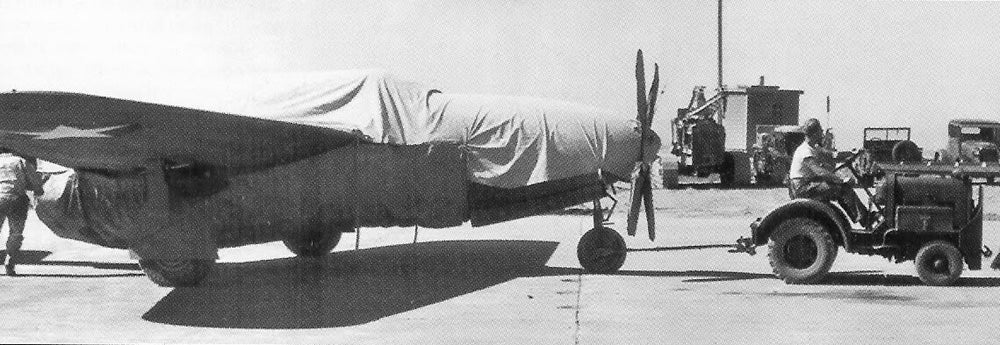
XP-59 fitted with wooden propeller and shrouds covering the jet engines
Bell finalized his design for the Airacomet in January 1942, and even before the first prototype was flown, an order was placed for 13 aircraft. Unlike the
!!!error: Indecipherable SUB-paragraph formatting!!!
and the
!!!error: Indecipherable SUB-paragraph formatting!!!
, both of which had their two engines housed in wing-mounted pods, the Airacomet had its engines and intake nacelles integrated into the fuselage, a design that would heavily influence future jet aircraft design. The Airacomet’s first flight was actually unintended, as Bell test pilot Robert Stanley unintentionally lifted off the ground during high-speed taxi tests, and the official maiden flight was made on October 2. The Airacomet generally performed well, though it showed a tendency to yaw from side to side and was deemed unsuitable as a fighter. With a top speed of 404 mph, it was no great leap forward from contemporary propeller fighters and, even when the P-59B was given an upgraded engine, it’s top speed only just equaled that of the
!!!error: Indecipherable SUB-paragraph formatting!!!
. A further development of the Airacomet, with a single engine, was considered, but that project was eventually handed off to
!!!error: Indecipherable SUB-paragraph formatting!!!
, where
!!!error: Indecipherable SUB-paragraph formatting!!!
developed it into the
!!!error: Indecipherable SUB-paragraph formatting!!!
, the first jet fighter to be flown operationally by the US. A total of 66 Airacomets were produced and, while the aircraft saw limited service, it still proved useful for training the first generation of jet fighter pilots and mechanics, who used the P-59 to learn the characteristics of jet aviation and maintenance before transitioning to more modern aircraft.
(US Air Force photos)
!!! UNKNOWN CONTENT TYPE !!!

October 4, 1957 – The launch of Sputnik 1 . The eighteenth-month period from July 1, 1957 to December 31, 1958 was celebrated as the !!!error: Indecipherable SUB-paragraph formatting!!! (IGY). Sixty-seven countries (but not China, who was protesting the inclusion of Taiwan and refused to participate) tried to transcend the divides of the !!!error: Indecipherable SUB-paragraph formatting!!! and come together on scientific projects covering eleven Earth sciences, including ionospheric physics and other investigations into the near space around our planet. But since this was still the !!!error: Indecipherable SUB-paragraph formatting!!! , the Soviet Union saw the IGY as the perfect opportunity to make a propaganda statement by launching the world’s first artificial satellite into space, Sputnik 1 ( Sputnik simply means satellite ). For a generation brought up on stories of space adventure and the wonders of science fiction, this was science reality, and the American public was shocked that the Russians had beaten the US into space. Sputnik 1 was launched into orbit from the modern-day !!!error: Indecipherable SUB-paragraph formatting!!! in Kazakhstan atop the !!!error: Indecipherable SUB-paragraph formatting!!! , which was derived from the !!!error: Indecipherable SUB-paragraph formatting!!! , the world’s first !!!error: Indecipherable SUB-paragraph formatting!!! (ICBM). The satellite itself was about 24 inches in diameter and trailed four antennas, whose placement equally around the satellite meant that it could transmit to Earth from any position in its rotation. As Sputnik 1 circled the Earth, it emitted radio pulses that could be tracked by amateur radio operators on the ground, a constant reminder that the Russians were directly overhead. Sputnik 1 could also be seen from the Earth, and those who turned their binoculars and telescopes skyward could watch the Russian satellite pass overhead. In addition to the obvious propaganda coup that Sputnik provided the Russians, the satellite also performed some useful scientific experiments. As the satellite moved through the upper atmosphere, the drag it experienced helped to ascertain the density of the upper atmosphere, and the radio signals sent back to Earth provided useful information about the ionosphere. The radio signals lasted for 21 days before the three silver-zinc batteries ran out, and Sputnik 1 burned up on re-entry into the Earth’s atmosphere on January 4, 1958, just three days after the US launched their own satellite, !!!error: Indecipherable SUB-paragraph formatting!!! . However, the Americans only managed a third place finish in the first heat of the Space Race, as the Russians had launched !!!error: Indecipherable SUB-paragraph formatting!!! in November of 1957. Despite the intention of the IGY to bring nations together, the launch of Sputnik 1 also marked the beginning of the !!!error: Indecipherable SUB-paragraph formatting!!! , an entirely new competition between East and West, with America seemingly always one step behind. It was not until the !!!error: Indecipherable SUB-paragraph formatting!!! put a man on the Moon that the Americans gained the upper hand. But the Russians would shrug and say they never wanted to go to the Moon anyway, though they !!!error: Indecipherable SUB-paragraph formatting!!! , and instead focused their efforts on long endurance missions in orbiting space stations. (NASA Photo)
!!! UNKNOWN CONTENT TYPE !!!
Short Takeoff
!!! UNKNOWN CONTENT TYPE !!!
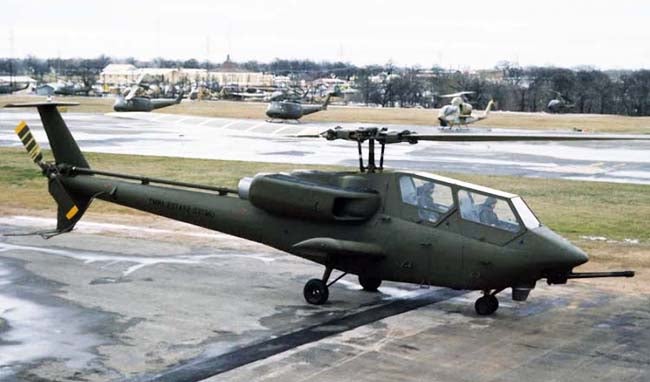
October 1, 1975 – The first flight of the Bell YAH-63, the unsuccessful entrant into the US Army’s !!!error: Indecipherable SUB-paragraph formatting!!! (AAH) competition announced in 1972. Bell’s entry lost to the Hughes YAH-64, which would enter production in 1983 as the !!!error: Indecipherable SUB-paragraph formatting!!! (now produced by Boeing). The Army cited Bell’s two rotor blades as being more vulnerable to ground fire than the Apache’s four, and felt the tricycle landing gear was less stable. Bell would use the lessons learned with the YAH-63 to help develop the !!!error: Indecipherable SUB-paragraph formatting!!! , an upgraded version of the earlier !!!error: Indecipherable SUB-paragraph formatting!!! attack helicopter. (Photo author unknown)
!!! UNKNOWN CONTENT TYPE !!!
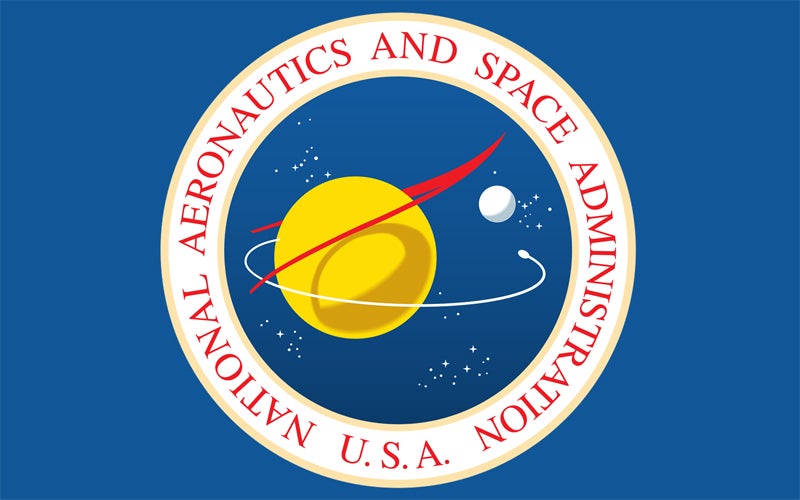
October 1, 1958 – The National Aeronautics and Space Administration (NASA) becomes operational. NASA has its origin in NACA, the !!!error: Indecipherable SUB-paragraph formatting!!! , an agency created in 1915 to further the efforts of aeronautic research and technological development in the United States. But as America entered the space age following WWII, it became clear that the country needed an organization for a new era. The !!!error: Indecipherable SUB-paragraph formatting!!! carries this simple preamble: “To provide for research into problems of flight within and outside the earth’s atmosphere, and for other purposes.” The Act goes on to say that, “The Congress hereby declares that it is the policy of the United States that activities in space should be devoted to peaceful purposes for the benefit of all mankind.” In addition to NASA’s high profile space programs such as !!!error: Indecipherable SUB-paragraph formatting!!! , !!!error: Indecipherable SUB-paragraph formatting!!! , !!!error: Indecipherable SUB-paragraph formatting!!! , the !!!error: Indecipherable SUB-paragraph formatting!!! , and the !!!error: Indecipherable SUB-paragraph formatting!!! , the organization continues to fund research into all aspects of space exploration, space travel, aviation, and related sciences. NASA’s latest large project, the !!!error: Indecipherable SUB-paragraph formatting!!! and the !!!error: Indecipherable SUB-paragraph formatting!!! Multi-Purpose Crew Vehicle, will see astronauts return to the Moon, create a permanent lunar station, and one day journey to Mars.
!!! UNKNOWN CONTENT TYPE !!!
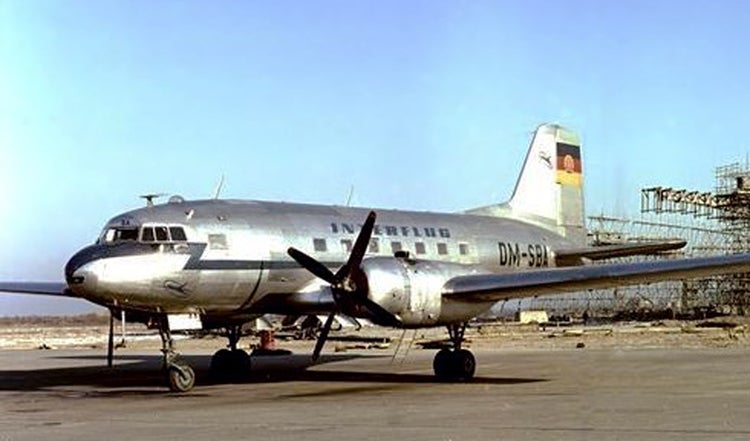
October 1, 1950 – The first flight of the Ilyushin Il-14, a civilian and military transport aircraft that was developed to replace the !!!error: Indecipherable SUB-paragraph formatting!!! and its Russian-built version, the !!!error: Indecipherable SUB-paragraph formatting!!! . Developed from the !!!error: Indecipherable SUB-paragraph formatting!!! , the Il-14 was produced in Russia, former East Germany, former Czechoslovakia and China. Over 1,300 were built, and they served in many !!!error: Indecipherable SUB-paragraph formatting!!! and Russian allied countries. Following the Soviet aircraft design ethos, the Il-14 was of rugged construction and designed to operate from rough and unimproved airstrips. The last Russian aircraft were retired in 2005, though some remain operational today. (Photo from Bundesarchiv via !!!error: Indecipherable SUB-paragraph formatting!!! )
!!! UNKNOWN CONTENT TYPE !!!
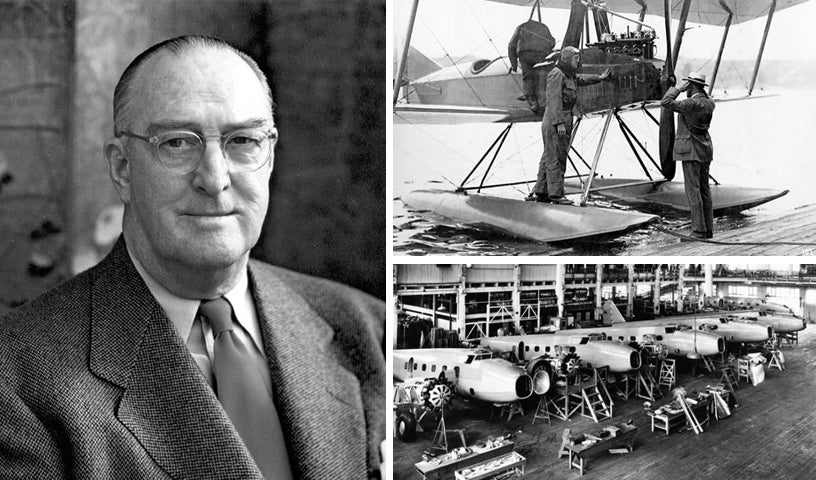
October 1, 1881 – The birth of William E. Boeing. William Boeing was born to German and Austrian parents (Wilhelm Böing) in Detroit, Michigan. The family made a fortune selling timber, and William at first entered the family business. On a visit to Seattle in 1909, Boeing saw his first airplane, took flying lessons, and purchased his first aircraft, a Martin TA hydroaeroplane. When that plane crashed, rather than wait on parts, Boeing approached his friend George Westervelt and said they should build their own airplane. The !!!error: Indecipherable SUB-paragraph formatting!!! took its maiden flight in 1916, and their company built 50 airplanes for the US Army during WWI. After the war, Boeing focused on commercial aircraft, but he left the aviation industry in 1937 to raise horses and develop property. The company he founded is now one of the world’s largest producers of civilian and military aircraft and spacecraft. Boeing died on September 28, 1956 at age 74. (Boeing and factory photos via San Diego Air & Space Museum; Model 1C photo via US Library of Congress)
!!! UNKNOWN CONTENT TYPE !!!
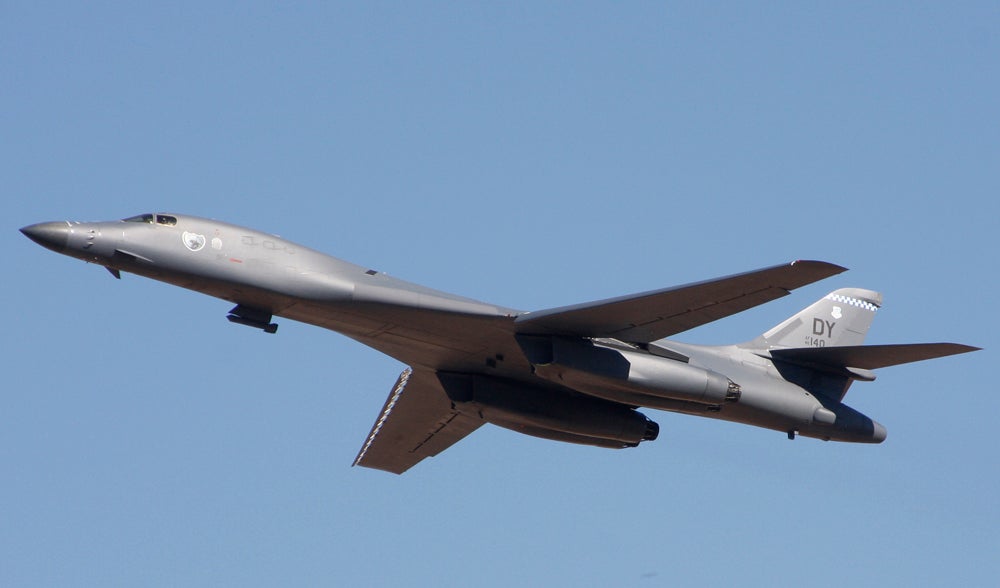
October 2, 1981 – US President Ronald Reagan restarts the Rockwell B-1 Lancer program. The original B-1 had been developed as a low level, supersonic nuclear and conventional bomber, and first flew in 1974. But citing cost overruns, as well as the proliferation of !!!error: Indecipherable SUB-paragraph formatting!!! , the project was canceled in 1977 by President !!!error: Indecipherable SUB-paragraph formatting!!! . By the time !!!error: Indecipherable SUB-paragraph formatting!!! took office in 1981, the doctrine of fighting the Soviet Union had changed, and the US was now facing regional conflicts that were difficult to fight with the existing !!!error: Indecipherable SUB-paragraph formatting!!! . As part of his promise to rebuild the US military, President Reagan restarted the B-1 program, and the bomber was developed into the B-1B, an upgraded and more capable version of the original B-1A. Rockwell received a contract to build 100 Lancers at a cost of $2.2 billion, and production ended in 1988. (Photo by the author)
!!! UNKNOWN CONTENT TYPE !!!
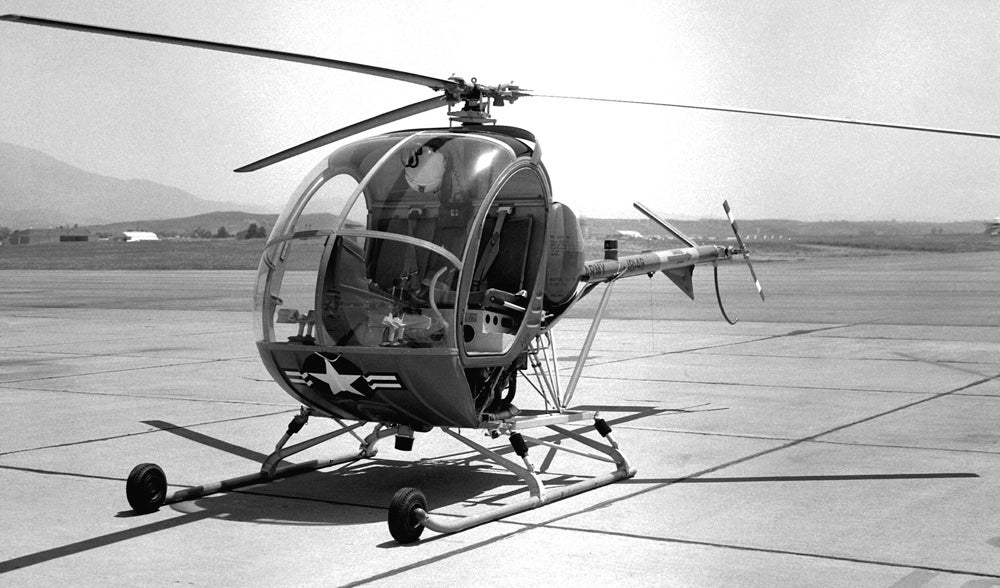
October 2, 1956 – The first flight of the Hughes TH-55 Osage. Development of the Osage began in 1955 when Hughes identified a market for a low-cost, lightweight two-seat helicopter, and began work on the Model 269. Initially turned down by the US Army, they showed a renewed interest in the improved Model 269A, and adopted it in 1964 as the primary training helicopter to replace the !!!error: Indecipherable SUB-paragraph formatting!!! . By the time the Osage was replaced by the !!!error: Indecipherable SUB-paragraph formatting!!! (“Huey”) in 1988, more than 60,000 Army pilots had trained on the TH-55. The civilian Model 269/300 is used for transport, observation and agricultural spraying. 2,800 were produced from 1961-1983. (US Army photo)
!!! UNKNOWN CONTENT TYPE !!!

October 2, 1946 – The first flight of the Vought F6U Pirate, the first jet fighter built by Vought for the US Navy. In September 1944, the Navy announced a specification for a single-seat fighter built around the !!!error: Indecipherable SUB-paragraph formatting!!! turbojet engine. To save weight, the Pirate was constructed of “Metalite,” balsa wood sandwiched between layers of aluminum. But the Pirate was woefully underpowered and, even after the installation of a more powerful engine, the Navy’s !!!error: Indecipherable SUB-paragraph formatting!!! stated, “The F6U-1 had proven so sub-marginal in performance that combat utilization is not feasible.” The 30 production Pirates racked up only 945 hours of total flight time, and some had a mere six hours on the airframe, just long enough to certify the aircraft for acceptance and ferry it to its final resting place. (US Navy photo)
!!! UNKNOWN CONTENT TYPE !!!
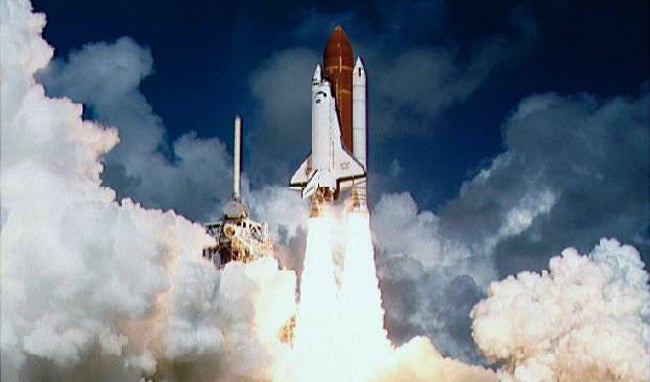
October 3, 1985 – The first flight of the Space Shuttle Atlantis, the fourth of five Space Shuttles produced and the last Shuttle to launch into orbit ( !!!error: Indecipherable SUB-paragraph formatting!!! , July 8, 2011) after the cancelation of the !!!error: Indecipherable SUB-paragraph formatting!!! . It’s first mission, !!!error: Indecipherable SUB-paragraph formatting!!! , delivered a classified Department of Defense payload to orbit and returned to Earth on October 7. Over the course of 33 spaceflights, Atlantis racked up 4,848 orbits of the Earth, flew nearly 126 million miles, carried 156 different astronauts to space, and performed the fourth and final servicing mission to the !!!error: Indecipherable SUB-paragraph formatting!!! ( !!!error: Indecipherable SUB-paragraph formatting!!! ). Atlantis is now on display at the Kennedy Space Center Visitor Complex. (NASA Photo)
!!! UNKNOWN CONTENT TYPE !!!
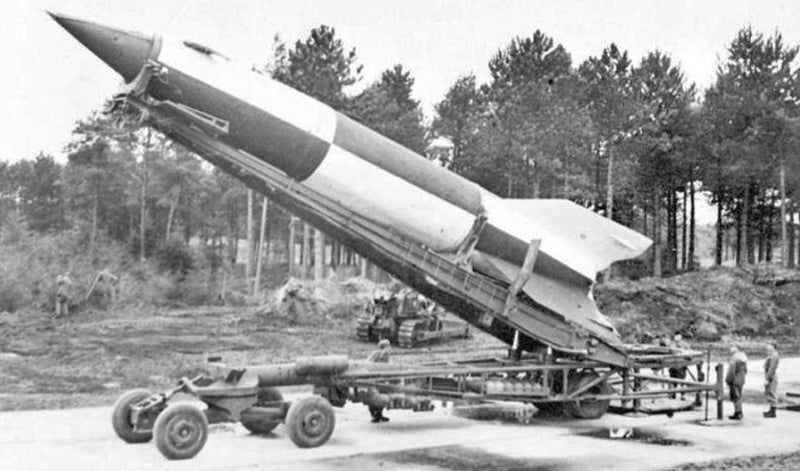
October 3, 1943 – The first launch of the V-2 rocket, a gyroscopically guided “vengeance weapon” developed by German rocket scientist !!!error: Indecipherable SUB-paragraph formatting!!! . The test launch, and many following operational launches, took place from !!!error: Indecipherable SUB-paragraph formatting!!! on the island of Usedom in the Baltic Sea. The rocket traveled just 118 miles, but it was the precursor to more than 1,100 rockets that would be fired against England and France beginning in early September 1944. Fired from mobile launchers and reaching speeds of almost 4,000 mph, the rockets were impossible to intercept and caused the deaths of more than 2,700 Britons. Following the war, captured V-2 rockets—and captured German scientists—formed the nucleus of American and Russian space programs. (Photo author unknown)
!!! UNKNOWN CONTENT TYPE !!!
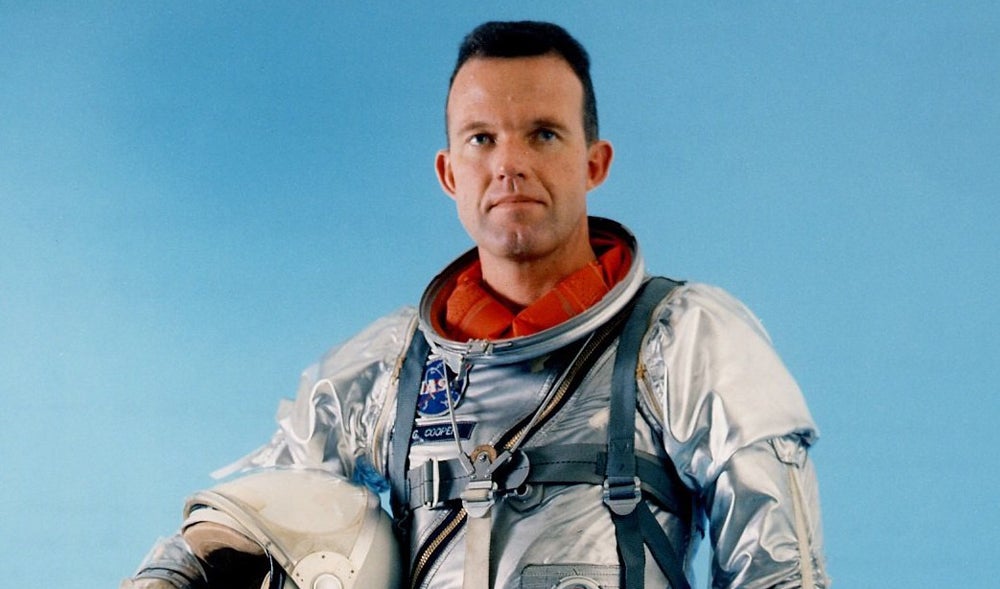
October 4, 2004 – The death of Gordon Cooper. Born on March 6, 1927 in Shawnee, Oklahoma, Cooper was an aerospace engineer, US Air Force pilot and test pilot, and the youngest of the original !!!error: Indecipherable SUB-paragraph formatting!!! astronauts. Cooper flew into space on May 15, 1963 on !!!error: Indecipherable SUB-paragraph formatting!!! , the sixth and final manned mission of !!!error: Indecipherable SUB-paragraph formatting!!! and the final time a single American astronaut would be launched into orbit. Cooper spent 34 hours in space on that flight, setting a record for the time, and was the first American astronaut to sleep in space. In 1965, Cooper returned to space as Command Pilot of !!!error: Indecipherable SUB-paragraph formatting!!! with !!!error: Indecipherable SUB-paragraph formatting!!! . Passed over for an Apollo mission, Cooper retired from NASA in 1970, and died of Parkinson’s Disease at age 77. (NASA photo)
!!! UNKNOWN CONTENT TYPE !!!

October 4, 1968 – The first flight of the Tupolev Tu-154, a three-engine narrow-body airliner that served as the mainstay of the Russian flag carrier airline !!!error: Indecipherable SUB-paragraph formatting!!! and 17 other nations. Since its introduction in 1972, the Tu-154 has carried half of all civilian passengers flown by Aeroflot (137.5 million passengers a year). Like many other Soviet aircraft, the Tu-154 was designed to operate from unpaved airfields, and provided service to otherwise unreachable Arctic regions of the Soviet Union. Aeroflot announced the retirement of the Tu-154 in 2010 after almost 40 years of service, with the last scheduled passenger flight taking place in May 2015. (Photo by Anton Bannikov via !!!error: Indecipherable SUB-paragraph formatting!!! )
!!! UNKNOWN CONTENT TYPE !!!
Recent Aviation History Posts
!!! UNKNOWN CONTENT TYPE !!!
!!! UNKNOWN CONTENT TYPE !!!
!!! UNKNOWN CONTENT TYPE !!!
!!! UNKNOWN CONTENT TYPE !!!
!!! UNKNOWN CONTENT TYPE !!!
If you enjoy these Aviation History posts, please let me know in the comments. And if you missed any of the past articles, you can find them all at !!!error: Indecipherable SUB-paragraph formatting!!! .
!!! UNKNOWN CONTENT TYPE !!!
 RamblinRover Luxury-Yacht
> ttyymmnn
RamblinRover Luxury-Yacht
> ttyymmnn
10/04/2016 at 13:01 |
|
>B1 “photo by author”<
I sees yer humblebrag in there.
 ttyymmnn
> RamblinRover Luxury-Yacht
ttyymmnn
> RamblinRover Luxury-Yacht
10/04/2016 at 13:13 |
|
I give credit everywhere else, so why not?
 RallyWrench
> ttyymmnn
RallyWrench
> ttyymmnn
10/04/2016 at 13:23 |
|
Big week. Le May reminds me of the joke that Civil engineers design targets and mechanical engineers design ways to blow them up. He switched sides.
 MonkeePuzzle
> ttyymmnn
MonkeePuzzle
> ttyymmnn
10/04/2016 at 13:27 |
|
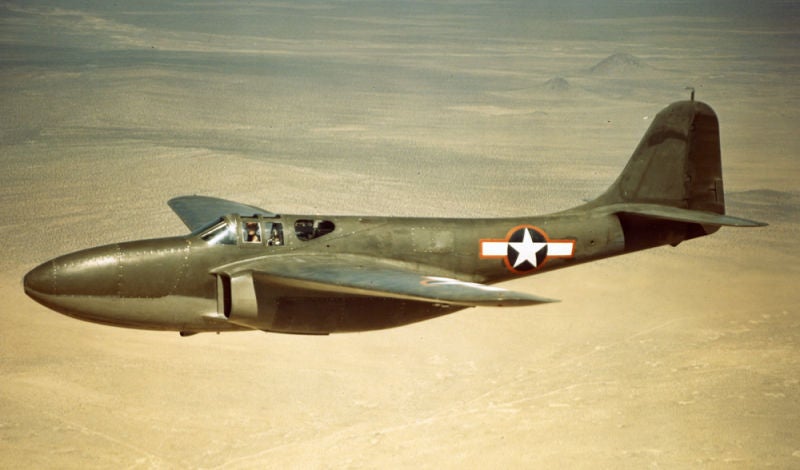
this is so sleek and beautiful. I love those inboard engines. I love the clean nose. I love that there’s nothing hanging underneath the wings. A warplane without all the war.
 ttyymmnn
> MonkeePuzzle
ttyymmnn
> MonkeePuzzle
10/04/2016 at 13:30 |
|
I like that take on the Airacomet. It was a beautiful plane, if not a successful one.
 MonkeePuzzle
> ttyymmnn
MonkeePuzzle
> ttyymmnn
10/04/2016 at 13:31 |
|
The Army cited Bell’s two rotor blades as being more vulnerable to ground fire than the Apache’s four
lol, they don’t know how shooting at things work. although I get their meaning, damage to 1 of 2 blades would be more of an issue than damage to 1 of 4 blades. but HITTING 2 blades is going to be harder than hitting 4 :P
 RamblinRover Luxury-Yacht
> RallyWrench
RamblinRover Luxury-Yacht
> RallyWrench
10/04/2016 at 13:32 |
|
mechanical engineers design ways to blow them up
Nein, I mean no, diese ist keine Waffensystem. Es ist for puppies.
 ttyymmnn
> RallyWrench
ttyymmnn
> RallyWrench
10/04/2016 at 13:33 |
|
He was a hard ass at a time when a hard ass was most needed. And though it only got a passing mention, he had a huge impact on auto racing.
https://blog.hemmings.com/index.php/2013/12/10/racing-heroes-general-curtis-lemay/
 ttyymmnn
> MonkeePuzzle
ttyymmnn
> MonkeePuzzle
10/04/2016 at 13:33 |
|
The AH-64 was a victory for redundancy.
 MonkeePuzzle
> ttyymmnn
MonkeePuzzle
> ttyymmnn
10/04/2016 at 13:34 |
|
gyroscopically guided “vengeance weapon”
oh my god! I had no idea the V was for vengeance, that is... just wow
 MonkeePuzzle
> ttyymmnn
MonkeePuzzle
> ttyymmnn
10/04/2016 at 13:36 |
|
wonder how both craft would have flown with damage to 1 rotor. it might very well have been irrelevant, good chance they both sucked to fly with a damaged blade.
 MonkeePuzzle
> ttyymmnn
MonkeePuzzle
> ttyymmnn
10/04/2016 at 13:37 |
|
form over function, the failure of many beautiful things
 ttyymmnn
> MonkeePuzzle
ttyymmnn
> MonkeePuzzle
10/04/2016 at 13:37 |
|
Vergeltungswaffen translates perhaps more accurately as “reprisal weapon” or “retaliatory weapon,” but vengeance works too.
https://en.m.wikipedia.org/wiki/V-weapons
 ttyymmnn
> MonkeePuzzle
ttyymmnn
> MonkeePuzzle
10/04/2016 at 13:40 |
|
I can’t speak for the AH-63, but the Apache is built to withstand 7.62mm bullets, so pretty much anything hand held.
 ttyymmnn
> MonkeePuzzle
ttyymmnn
> MonkeePuzzle
10/04/2016 at 13:43 |
|
The Airacomet’s failure owes more to underpowered engines than anything else. The rapid pace of engine and aircraft design left many promising aircraft behind. it was pretty, but it was also pretty slow. Its importance, however, cannot be understated.
 McMike
> ttyymmnn
McMike
> ttyymmnn
10/04/2016 at 13:52 |
|
While Pete’s Prop 22 against same-sex marriage didn’t last, his winged aircraft speed record has.
On
October 3, 1967,
Knight set a world aircraft speed record for manned
aircraft by piloting the X-15A-2 to 4,520 miles per hour (7,274 km/h) (Mach
6.72), a record that still stands today. During 16 flights in the
aircraft, Knight also became one of only five pilots to earn their Astronaut Wings by flying an airplane in space, reaching an altitude of 280,500 feet (85,500 m) (
link
)

 Cé hé sin
> ttyymmnn
Cé hé sin
> ttyymmnn
10/04/2016 at 15:02 |
|
“LeMay had his crews switch to low level, nighttime incendiary attacks against the Japanese homeland, where many of the cities were largely constructed of wood. These fire raids caused the deaths of an estimated 500,000 Japanese civilians, and led to vicious reprisals against American POWs”
If he had been on the losing side, wouldn’t he have been the subject of a war crimes trial?
 ttyymmnn
> Cé hé sin
ttyymmnn
> Cé hé sin
10/04/2016 at 15:17 |
|
Very possibly, but history is always written by the victors. American strategic bombing as a whole was somewhat of an atrocity. For all the talk of the atomic bombings, more civilians were killed in the firebombing raids on Japan and the attack on Dresden than were killed by the atom bombs.
 gmporschenut also a fan of hondas
> Cé hé sin
gmporschenut also a fan of hondas
> Cé hé sin
10/04/2016 at 22:20 |
|
http://www.dancarlin.com/product/hardcore-history-42-blitz-logical-insanity/
the mentality of US, British, German generals was completely fucked up.